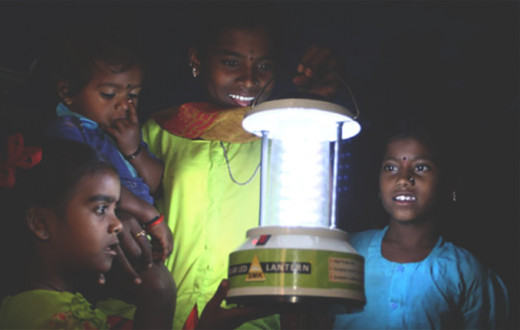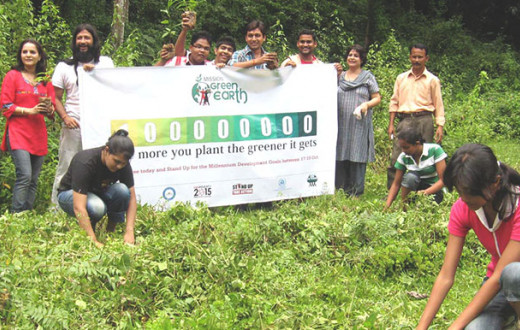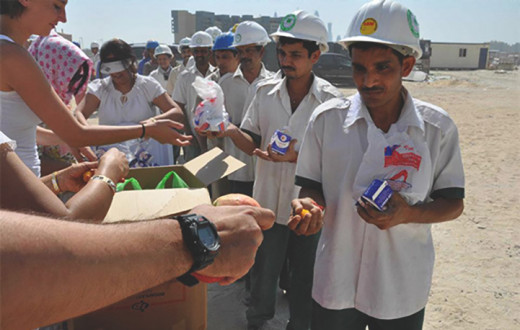Life has changed completely for Dadasaheb Khatar, a farmer who lives in Kapsi village located on the dusty two-lane Phalton-Satara highway. His days of long wait for tankers are over. He no longer looks out from Phalton for tankers that used to bring 12,000 liters of water every two days for his cows, family, and fields. He now gets water from one of the many check-dams built in his village by the volunteers of The Art of Living.
Kapsi is one of the 1,200 villages in Maharashtra that are transforming on many fronts with relentless efforts of The Art of Living volunteers. With a population of approximately 1,700 people and no industrial activity even in nearby villages, drought conditions between 2000 to 2003 had put the village back by almost 20 years.
“Most villagers had lost hope and had become addicted to alcohol,” shared Dr. Madhav Pol, an Art of Living teacher who took charge of transforming the village.
Bringing water in Kapsi
The Art of Living volunteers and teachers took upon the challenge of bringing water back in the village. They started by building check-dams to collect rainwater for future use in order to tackle the severe water problems of the villagers.
"Today, there are 28 check-dams, 17 gabion structures and 11 underground structures which collect rainwater. As a result, they can now withstand two years without rainfall,” said Dr. Pol.
"Three cement bandaras (permanent structures that collect water) have also been built to further consolidate its water position," he added.
Khatar's happiness is evident. "What could be better,” he asks smilingly, stating, “Today, there is water everywhere. All the fields are well-watered because of underground structures. The water tables have risen and when we think of our previous situation, it's unbelievable. What could be better than having enough water for a farmer?”
Built from the seed money donated by The Art of Living, the dams have raised the water table so high that all the wells are full.
Empowering Kapsi folks
Meanwhile, Pol and team worked on boosting villagers’ confidence. The team conducted Breath-Water-Sound workshops, a five-day stress-elimination workshop specially designed for the rural folk. The workshops helped in getting rid of the addiction. "Today, 90 percent of the population has given up alcohol," said Khatar.
Once the villagers found their confidence back, they were ready to help rebuild their village. With the help of the state government and The Art of Living volunteers, the villagers implemented the Continuous Contour Trench (CCT) method, a technique that conserves soil, water, and increases agriculture production.
Doubling agricultural yield
The droughts had completely crippled the economic lifeline of Kapsi - agriculture. While initiatives like CCT and building check-dams helped boost agriculture in Kapsi, there was still scope for improvement.
The Art of Living volunteers held seminars on natural farming, which helped 4,500 farmers better their yields through natural means and zero investment. As a result of these seminars, 30 percent of the farmers adopted the natural farming methods and the village had almost doubled its agricultural yield that year.
"We want to reach out to as many villages as possible. We have touched 31,500 villages so far," said Ramesh Raman, an Art of Living spokesperson.
The Sarpanch of Kapsi, Deepak Kadam, too is grateful for the long-term relief provided by these projects taken up by the organization. "During the drought period if we had approached the government they would have built roads to provide employment, which is not a solution to our problems. These projects have addressed our very needs."
Kapsi has already won an award at the taluka level and is attracting hordes of visitors.







